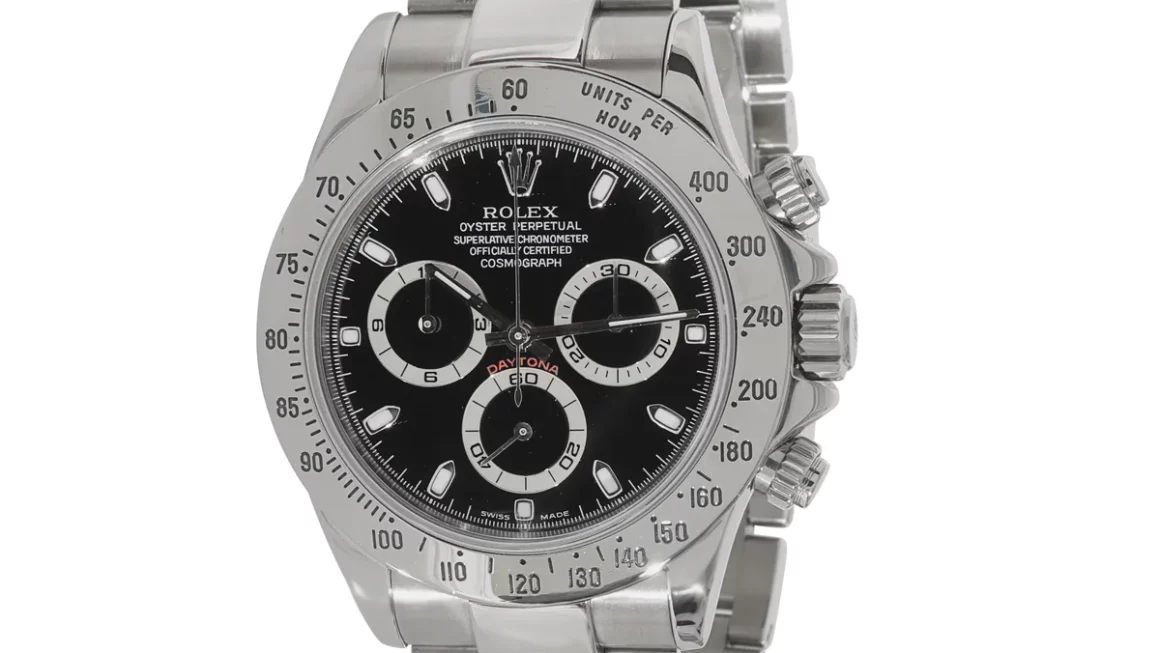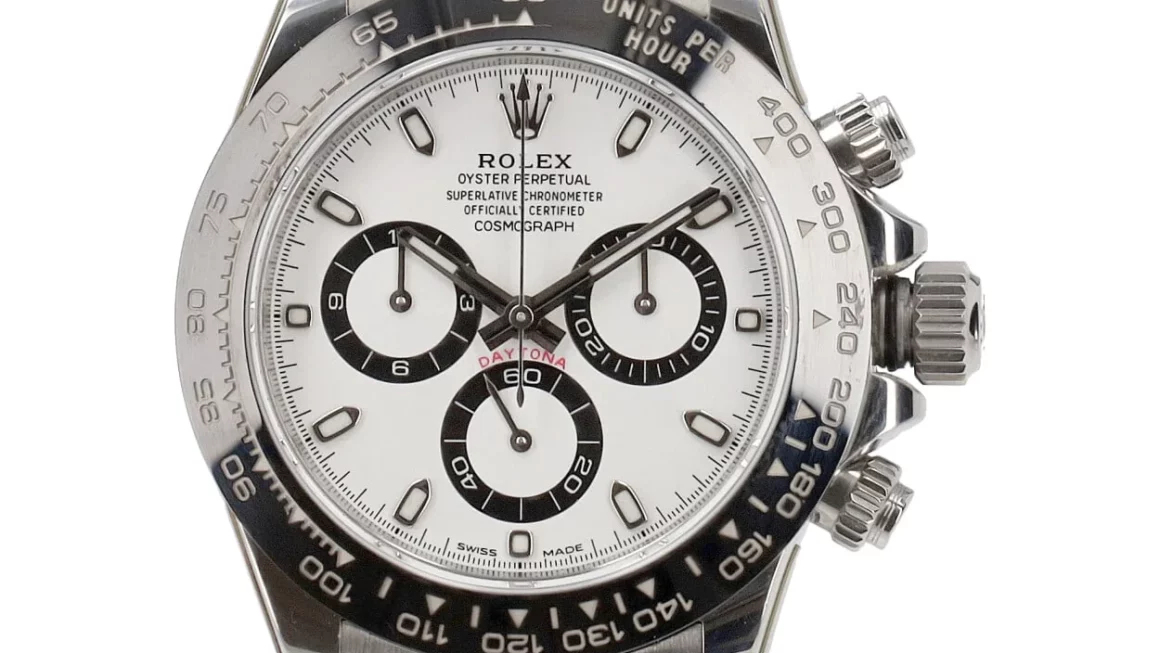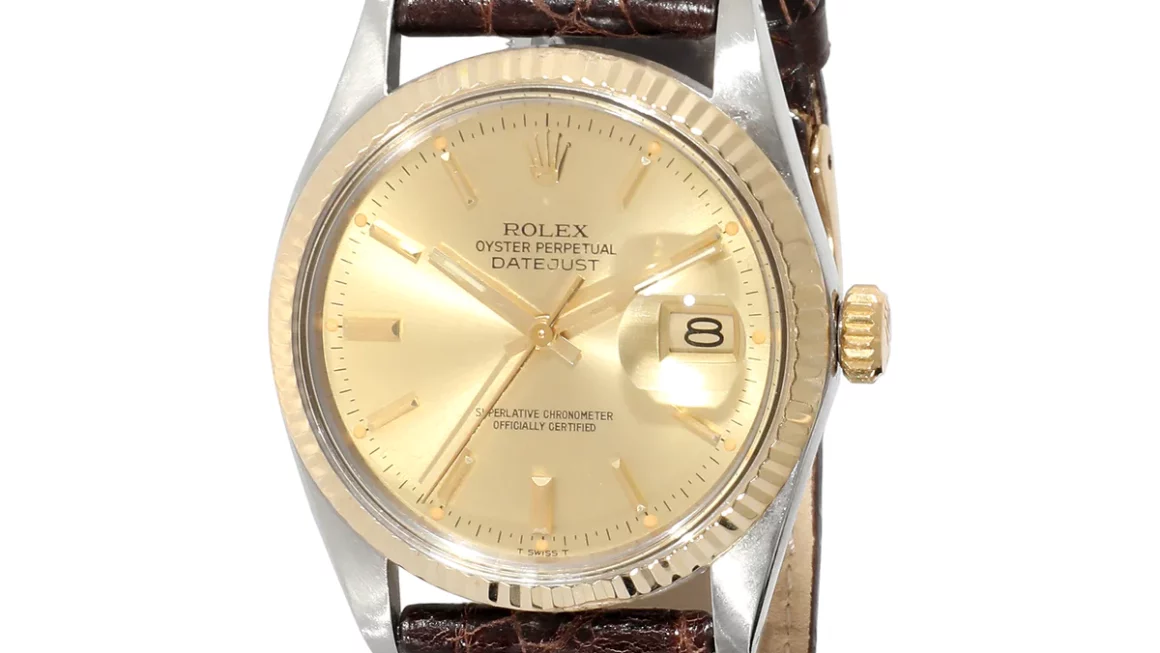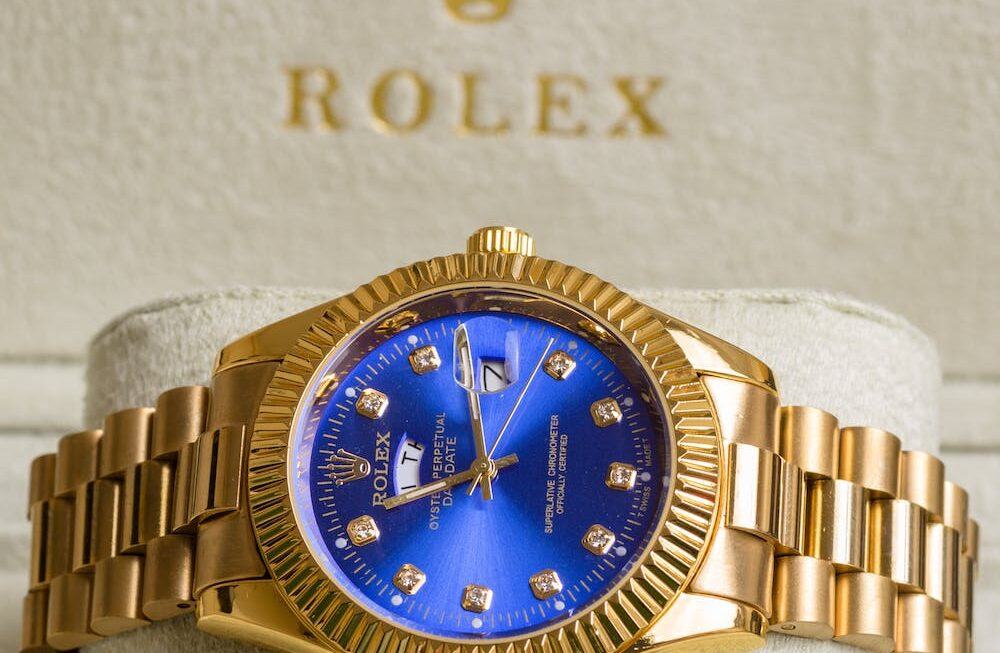Rolex is not merely a brand; it’s a cultural icon that has redefined the parameters of luxury, precision, and innovation. With a legacy spanning over a century, Rolex has become synonymous with excellence in horology. This comprehensive blog post aims to unravel “The Story of Rolex,” delving deep into its origins, the innovations that propelled it to global fame, and the intricate history of its diverse range of iconic models.
The Story of Rolex
In the bustling streets of London, 1905 marked the birth of Rolex, founded by Hans Wilsdorf and his brother-in-law Alfred Davis. Unlike other watch companies of the time, Rolex had a unique vision. Wilsdorf was not just content with creating aesthetically pleasing timepieces; he was obsessed with precision.
The duo began by importing Swiss movements, renowned for their accuracy, and housing them in high-quality cases crafted by local British artisans. This blend of Swiss precision and British craftsmanship laid the cornerstone for Rolex’s future success and set it on a path to redefine the world of horology.
What Made Rolex Famous?
The Oyster Case
The year 1926 was a watershed moment in Rolex’s history with the introduction of the Oyster case. This was not just another watch case but the world’s first truly waterproof and dustproof watch case. Designed with a hermetic seal, the Oyster case was revolutionary.
Its effectiveness was put to the ultimate test when Mercedes Gleitze, a young English swimmer, swam across the English Channel wearing a Rolex Oyster. The watch emerged fully functional after the grueling 10-hour swim, and Rolex’s reputation for creating durable, reliable watches was solidified on a global stage.
The Rolex Explorer and Mount Everest
In 1953, Sir Edmund Hillary and Tenzing Norgay achieved the impossible—reaching the summit of Mount Everest. What many don’t know is that they were equipped with Rolex Explorers on their wrists. This was no coincidence; Rolex had been part of the Himalayan expeditions since the early 1930s, rigorously testing their watches in extreme conditions.
The successful summit and the Explorer’s performance under such harsh conditions catapulted the model and the brand into a new realm of fame. Rolex became synonymous with adventure, durability, and the ability to perform when it mattered the most.
How Did Rolex Become Rolex?
The Role of Innovation
Rolex’s journey to the pinnacle of watchmaking was fueled by relentless innovation. One such groundbreaking invention was the Perpetual rotor, introduced in 1931. This self-winding mechanism revolutionized the industry by eliminating the need for manual winding, thus enhancing the watch’s accuracy and reliability.
Over the years, Rolex continued to set industry standards with innovations like the first watch with an automatically changing date (Rolex Datejust, 1945) and the first watch to show two time zones at once (Rolex GMT-Master, 1954). These pioneering features have not only kept Rolex at the forefront of horology but have also set benchmarks for the entire industry.
Celebrity Endorsements
Rolex’s allure isn’t just about its technical prowess; it’s also about the aura of prestige and luxury that surrounds it. This has been amplified through strategic celebrity endorsements. From legendary actors like Paul Newman to sports icons like Roger Federer, Rolex has been the timepiece of choice for many who have left an indelible mark on history.
The “Paul Newman” Daytona model, in particular, has achieved cult status and is one of the most sought-after vintage Rolex watches, often fetching astronomical prices at auctions. These endorsements have not only added a layer of glamour but have also served as a testament to Rolex’s unparalleled quality and reliability.
How Did Rolex Get Its Name?
The name “Rolex” wasn’t a product of happenstance; it was a calculated choice by Hans Wilsdorf. He wanted a name that was easy to pronounce in multiple languages, looked symmetrical on watch dials, and was short enough to fit elegantly on the face of a watch.
After experimenting with hundreds of combinations of letters, Wilsdorf settled on “Rolex,” a name that had no specific meaning but exuded a sense of elegance and simplicity. This name would go on to become one of the most recognized and respected brand names in the world, encapsulating the brand’s commitment to quality and innovation.
Where Does Rolex Come From?
The Swiss Connection
Although Rolex was founded in London, its heart and soul are deeply rooted in Switzerland. In 1919, the company moved its operations to Geneva, a city renowned for its watchmaking heritage. The move was strategic; Switzerland offered not only a rich history of horology but also access to some of the world’s best craftsmen and suppliers. Today, the term “Swiss Made” is synonymous with Rolex, serving as a badge of quality, precision, and luxury.
Global Expansion
Rolex’s rise to global prominence wasn’t accidental; it was the result of meticulous planning and strategic expansion. Today, Rolex watches are sold in over 100 countries, with boutiques and authorized dealers carefully selected to maintain the brand’s high standards.
This global reach has turned Rolex into a universal symbol of success and aspiration. Its international presence is not just about sales; it’s about building a global community of Rolex aficionados, united by their appreciation for quality and excellence.
The Rolex Models: A Historical Overview
The Rolex portfolio is a testament to the brand’s commitment to versatility and innovation. Whether you’re an adventurer, a sports enthusiast, or a connoisseur of fine craftsmanship, there’s a Rolex model designed for you. In this section, we will delve deeper into the story of Rolex and the unique features of each Rolex model, offering a comprehensive guide for both seasoned collectors and new enthusiasts.
Rolex Submariner
The Rolex Submariner, introduced in 1953, set a new standard for diver’s watches. Designed to be robust and functional, the Submariner was the first watch to be water-resistant up to 100 meters. Over the years, this limit has been extended to 300 meters. The Submariner’s iconic design, featuring a unidirectional rotatable bezel and a highly legible dial, has made it a favorite among professional divers and watch enthusiasts alike.
Rolex Daytona
The Rolex Daytona, launched in 1963, was engineered with professional race car drivers in mind. Featuring a highly accurate chronograph and a tachymetric scale on the bezel, the Daytona was designed for measuring elapsed time and calculating average speed.
The model gained legendary status when actor Paul Newman was frequently seen wearing his own Daytona, leading to the “Paul Newman” Daytona becoming one of the most coveted vintage Rolex watches. Its unique dial design and high-performance features have made it a must-have for both racers and collectors.
Rolex Datejust
Introduced in 1945 to commemorate Rolex’s 40th anniversary, the Datejust was the world’s first automatic wristwatch to feature an instantaneous date change. This groundbreaking feature and its timeless design have made the Rolex Datejust one of Rolex’s most versatile models. The Datejust is a testament to Rolex’s commitment to innovation and elegance and is available in various materials, sizes, and dial options.
Rolex GMT-Master
The Rolex GMT-Master was introduced in 1954, designed in collaboration with Pan American Airways for their long-haul pilots. The watch features a rotatable 24-hour graduated bezel and a separate 24-hour hand, allowing pilots to read the time in two different time zones simultaneously. This functionality, combined with its robust design, has made the GMT-Master a favorite among both pilots and frequent travelers.
Rolex Yacht-Master
Launched in 1992, the Rolex Yacht-Master embodies the spirit of the sailor. Engineered for nautical adventure, it features a rotatable bezel to allow for precise timing during yacht racing. Its luxurious design, featuring precious metals like platinum and gold, makes it not just a functional tool for seafarers but also a symbol of elegance and prestige.
Rolex Sea-Dweller
The Rolex Sea-Dweller, introduced in 1967, was designed to meet the demands of professional deep-sea divers. Building on the Submariner’s success, the Sea-Dweller offered an impressive water resistance of up to 610 meters initially, later extended to 1,220 meters.
The model also featured a helium escape valve, allowing helium to escape from the watch during decompression— a crucial feature for saturation diving. Over the years, the Sea-Dweller has remained a reliable tool for ocean explorers and a symbol of Rolex’s engineering prowess.
Rolex Air-King
The Rolex Air-King, first launched in 1945, pays tribute to the pioneers of flight and the RAF pilots of World War II. Designed with simplicity and readability in mind, the Air-King’s dial is a model of clarity, allowing pilots to read the time at a glance. While it may not have the specialized functions of other Rolex sports models, the Air-King is a testament to Rolex’s commitment to precision and reliability in all conditions.
Rolex Oyster Perpetual
The Oyster Perpetual is the purest expression of the Oyster concept, providing a clear and accurate time display. This model is a direct descendant of the original Oyster launched in 1926, the first waterproof wristwatch. It combines Rolex’s leading technologies: the Oyster case and the Perpetual rotor self-winding mechanism.
With its timeless design and functionality, the Oyster Perpetual is the cornerstone of Rolex’s collection, appealing to those who appreciate simplicity and elegance in a watch.
Rolex Sky-Dweller
Introduced in 2012, the Rolex Sky-Dweller is one of the brand’s newer models but has quickly gained recognition for its complexity and innovation. Designed for the global traveler, the Sky-Dweller features a dual time zone display and an annual calendar that automatically adjusts for months with 30 or 31 days.
Its Ring Command bezel allows the wearer to easily set all the watch functions through the crown, making it one of Rolex’s most user-friendly models.
Rolex Cellini
The Rolex Cellini line, named after the Italian Renaissance artist Benvenuto Cellini, represents the brand’s venture into the realm of formal, dress watches. Unlike Rolex’s other lines, which are primarily designed for specific sports or activities, the Cellini line focuses on elegance and sophistication.
With its clean lines, luxurious materials, and meticulous craftsmanship, the Cellini models are a tribute to the timeless codes of classic watchmaking.
Rolex Milgauss
The Rolex Milgauss, introduced in 1956, was designed for a very specific audience: scientists and engineers who are exposed to strong magnetic fields. The watch can withstand magnetic fields up to 1,000 gauss, a feature that was revolutionary at the time. Its unique lightning bolt second hand and the green sapphire crystal make it one of Rolex’s most distinctive models.
The Timeless Legacy: Unwinding the Rolex Phenomenon
The story of Rolex is a narrative of relentless innovation, meticulous craftsmanship, and a constant pursuit of excellence. From its humble beginnings in a London workshop to its current status as a global luxury icon, Rolex has set the standard for what a watch can and should be. Whether you’re scaling the highest peaks, diving into the deepest oceans, or attending a black-tie event, there’s a Rolex that tells more than just time—it tells a story.
Mark.




